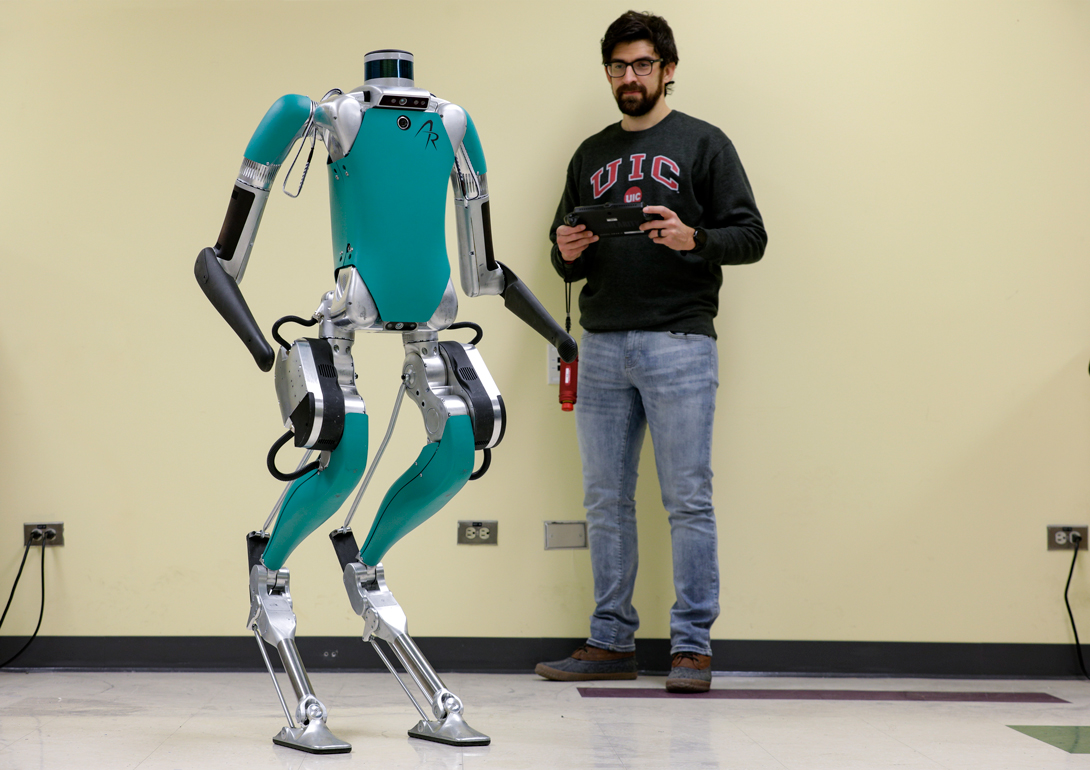Walking the walk
1

The abilities of human-like robots have advanced significantly over the years, but researchers still must overcome challenges to get those robots to a point where they can operate in the real world. A simple scenario with tables or chairs can provide a problem for robots trying to effortlessly go from one point to another in the way that a human would.
Pranav Bhounsule, an assistant professor in mechanical and industrial engineering, wants to take legged robotic movements to the next level with his research. “I’m interested in making legged robots more capable,” Bhounsule said. “One of the biggest challenges is we have not figured out how these robots can control their bodies so that they can move like humans and don’t fall down.”
“Humanoid robots are highly proficient at moving at a constant speed in a straight line, but they move very slowly and pause, stand, and stop before they move again when they are presented with obstacles that require unanticipated changes in speed and direction. We want to create new control algorithms to get robots to move in environments where humans go and move very easily.”
To reach his goal, Bhounsule is using a robot with highly articulated limbs that have multiple joints to increase the robot’s mobility. The downside of the increased articulation is that it makes the robot complex, and therefore it’s harder to plan and control its movement in cluttered spaces. Bhounsule is exploring mathematical formulations that simplify the complex dynamics and use computer optimizations to enable high-fidelity movements. In a home-like environment with furniture, appliances, and walls, for instance, the robot is able to plan its movement — considering its dynamics and all the obstacles — within fractions of a second.
Overcoming this challenge will bring legged robots closer to mainstream applications in homes, offices, factories, and warehouses.